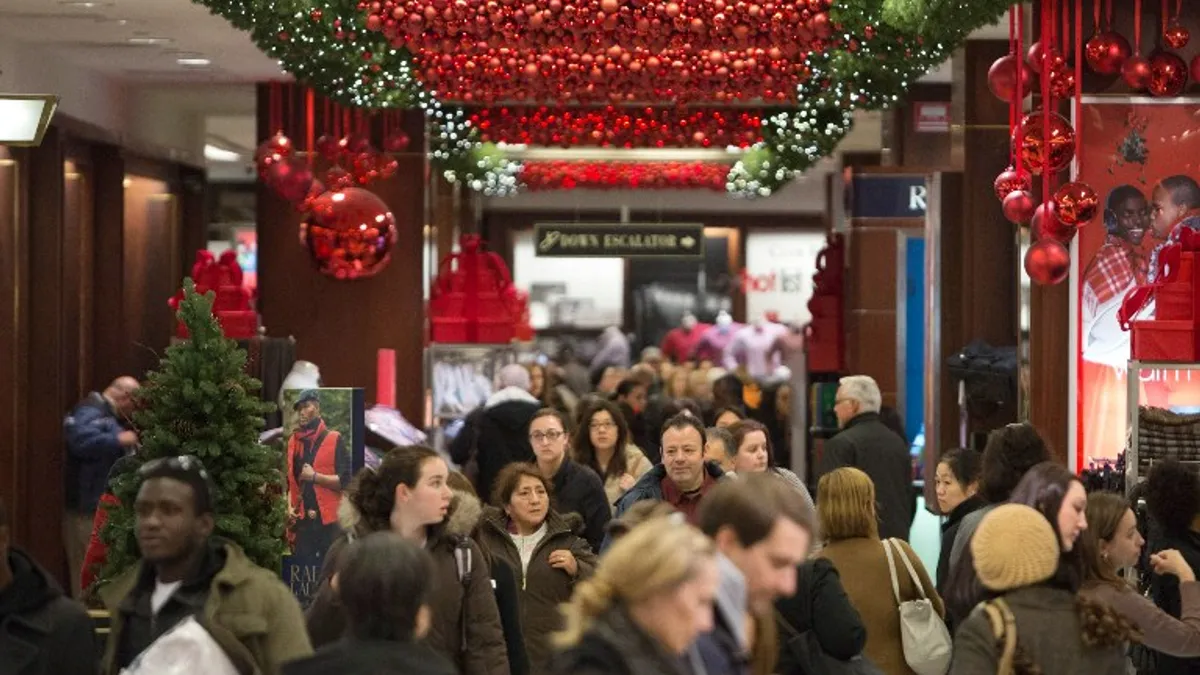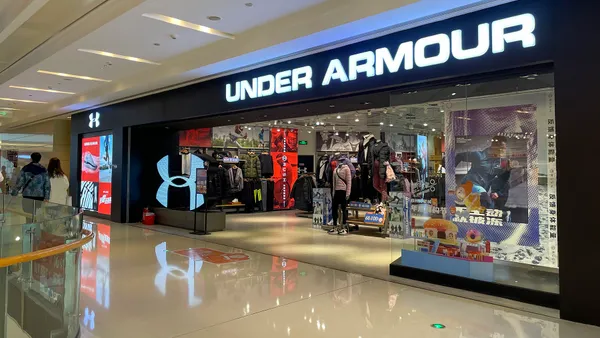Dive Brief:
-
While some retailers are already starting their holiday campaigns, 39% of shoppers think marketers should hold off on holiday ads until after Thanksgiving, and 48% said they won't make the majority of their purchases until after Cyber Monday, according to a new study from PebblePost emailed to Retail Dive.
-
Part of the reason for that delay might be because almost 40% of consumers make the majority of their holiday purchases on sale, according to PebblePost. That suggests many consumers wait around for the best deal before committing to a purchase.
-
When it comes to which type of ads customers prefer, 47% of holiday shoppers said catalogs and other mail offers are the most useful, while 88% said they enjoy receiving mail from brands they’ve shown an interest in and 46% prefer receiving ads that include discounts.
Dive Insight:
Overall, holiday shoppers seem receptive to receiving targeted and relevant mail advertisements — especially from their favorite retailers. According to a PebblePost blog post, though, retailers can go wrong by forcing too much attention on their customers.
"Consumers want to be in control and they want to make purchase decisions at their own pace. Hounding them with online ads, interrupting their user experience and demanding that they stop what they’re doing to ‘act now’ is not only disruptive — it’s rude," the post reads. "And according to our panel, it’s not helpful or impactful."
According to PebblePost, holiday shoppers are more informed and less impulsive, often spending several weeks or days to consider purchases before committing to them — findings which are supported by the NRF’s recent 2017 Retail Holiday Planning Playbook, though impulse holiday purchases are still important, according to the NRF.
"Not surprisingly, consumers want relevant, personalized offers from advertisers," Celeste Giampetro, vice president of marketing at PebblePost, told Retail Dive in an email. "That means, retailers must address existing customers differently than one and done and differently than new to file. Acknowledge that someone has purchased from you before and offer something valuable and relevant to improve their experience with your brand."
This type of personalization is especially important on digital formats, as e-commerce sales are expected to jump 16.6% this holiday season and mobile commerce is expected to rise by 57.8%. Even more suggestively, 82% of shoppers plan to buy gifts online (granted, 77% are planning on buying in-store as well) and Amazon is winning big with those shoppers. The vast majority (75%) of online shoppers are planning on buying from Amazon during the season, not to mention the Prime members, 90% of whom will buy from the e-commerce giant. Considering the company ranked first for back-to-school shopping, retailers should consider it a serious threat for the upcoming holiday season if they don’t already.
While Google has been a big player in the ad spend market in the past — and will likely continue to be — social media could gain more ground this season as marketers look to reach consumers on the platforms that they use most for the upcoming season.
This story is part of our ongoing coverage of the 2017 holiday shopping season. You can browse our holiday page and sign up for our holiday newsletter for more stories.















